In recent years, the feed industry has faced huge challenges. The Sino-US trade war, the policy of reducing the output of corn and soybean meal, and pressure brought by carbon neutrality have forced formulators to increase the selection range of feed ingredients. Wheat, sorghum, brown rice, pea, miscellaneous meal and other diversified alternative formulas are becoming popular. How to make better use of these raw materials and improve the utilization efficiency of these raw materials has become the primary problem to be solved. It is understandable that enzyme preparations play an important role in the process of improving the utilization efficiency of feed raw materials. The series products of EnerGen Supreme full effect multi-enzyme of JINAN BESTZYME BIO-ENGINEERING CO., LTD. came into being against such a backdrop.
A variety of NSP enzymes are added to EnerGen Supreme, including branched-chain enzymes (arabinofuranosidase + ferulic acid esterase), which can simultaneously degrade the main chain, branched chains and cross-links of key cell wall components of NSP, destroying plants more efficiently cell walls, releasing nutrients. At the same time, special amylase and protease systems are added to synergize with endogenous enzymes to improve the utilization of nutrients.
The analysis confirmed that the cell walls of higher plants are mainly divided into two types: primary wall and secondary wall. The primary wall mainly includes cellulose, hemicellulose, pectin and some structural proteins. The secondary wall is thicker than the primary wall. The main constituent of hemicellulose of plant's secondary wall is xylan. However, different types of cell walls have different substituted glycogroups for branched chains. In addition, the secondary wall contains a large amount of lignin. Here we need to pay attention to the three major constituents of plant cell walls that cannot be ignored: cellulose, hemicellulose, and lignin.
Cellulose is the main skeleton material of the cell wall. The proportion of cellulose in the cell wall constituents is generally 40.6% to 51.2%. The content of hemicellulose in the cell wall is second only to cellulose, accounting for 28.5% to 37.2%. Hydrogen bonds or other chemical bonds are connected to cellulose, and ferulic acid in hemicellulose of monocotyledonous plants such as corn and wheat can also be connected to lignin, thereby connecting cellulose and lignin and maintaining the integrity of the cell wall (Scheller and Ulvskov, 2010). Lignin is a complex kind of phenolic polymers, accounting for 13.6% to 28.1% of the cell wall (Pauly and Keegstra, 2008).
The structures of cellulose, hemicellulose and lignin in the cell wall are not independent, and there are cross-links among them. There is a "chemical hot spot" hypothesis for the interaction between hemicellulose and cellulose. The hypothesis suggests that part of the hemicellulose "bundles" the cellulose microfibrils together, and hemicellulase can unravel the "bundled" microfibrils, allowing the cell to extend smoothly. Therefore, synergistic action of hemicellulase and cellulase is required to effectively degrade this cell wall structure. Studies have shown that in monocotyledonous plants, xylan accounts for more than 90% of the hemicellulose constituents, and the xylose residues in the main chain of xylan will be further replaced by arabinose, which is a key cell wall factor affecting the degradation efficiency (Li Fengcheng, 2015). Hemicellulose and lignin are cross-linked, mainly through ferulate bonds (Grabber, 2005), and ferulate bonds can cross-link cell wall constituents through oxidation reactions. Therefore, hemicellulose and lignin are cross-linked through "hemicellulose-ester-ferulic acid-ether-lignin bridges" to form complexes, which in turn form a complex network throughout the cell wall (Lam et al, 2001). It can be seen that breaking the plant cell wall is a systematic project, which not only requires the synergistic action of cellulase and hemicellulase but also requires key branched-chain enzymes such as ferulic acid esterase and arabinosidase to break key cross-linking points, thereby destroying the structural integrity of cell wall.
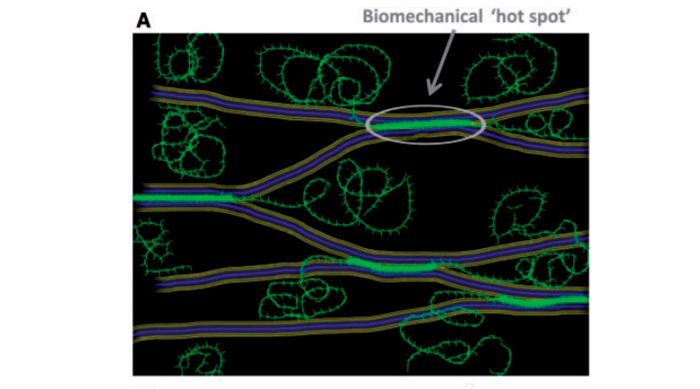
Figure 1. The "hot spot model" of the interaction between cellulose and hemicellulose
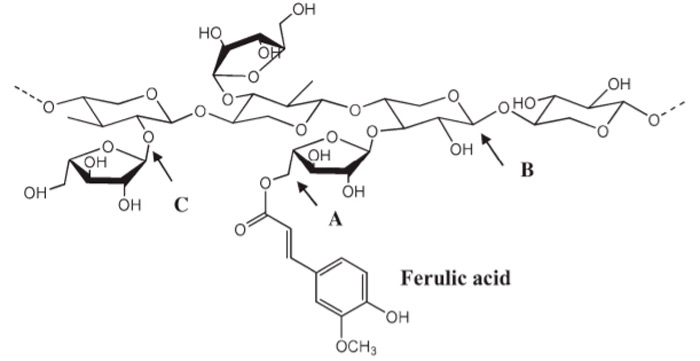
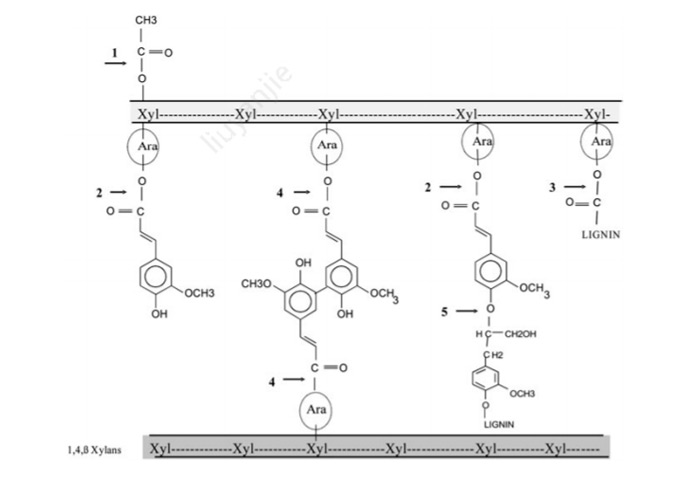
Figure 2. Ferulate bond of hemicellulose and lignin
For the feed industry, understanding the plant cell wall is the key to break the anti-nutritional effect of the cell wall, and ultimately to improve the utilization rate of nutrients such as protein and starch in the raw materials. EnerGen Supreme full-effect multi-enzyme not only considers NSP enzymes such as cellulase and hemicellulase of main chains and branched chains but also adds heat-resistant amylase and protease. While the opening of the cell wall is completed, the full utilization of nutrients is strengthened to achieve efficient decomposition and improve the utilization efficiency of feed materials.
Let's take a look at the effect of EnerGen Supreme full-effect multi-enzyme!
Improve the effect of enzymatic hydrolysis, which is manifested as increasing the production of reducing sugar and improving the digestibility of dry matter!
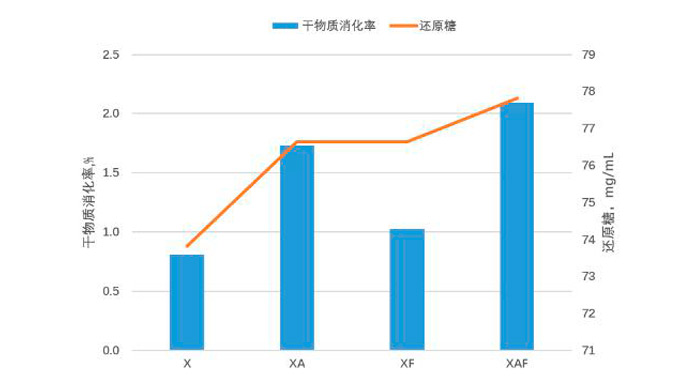
(X: xylanase, A: arabinofuranosidase, F: ferulic acid esterase)
The cell wall is broken faster, and the volume is larger after swelling and absorbing water!
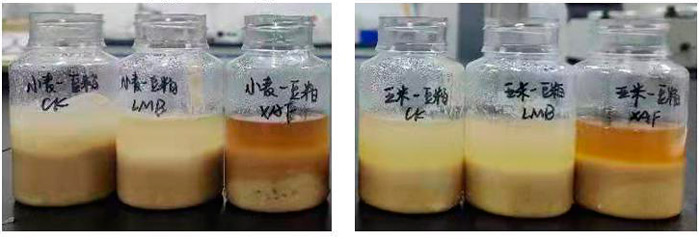
The digestibility of dry matter increases by 3 to 5 percentage points!
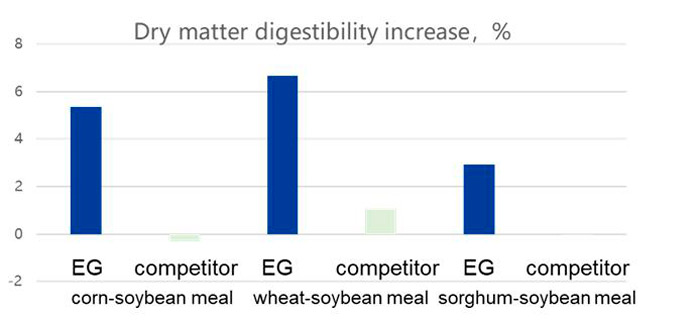
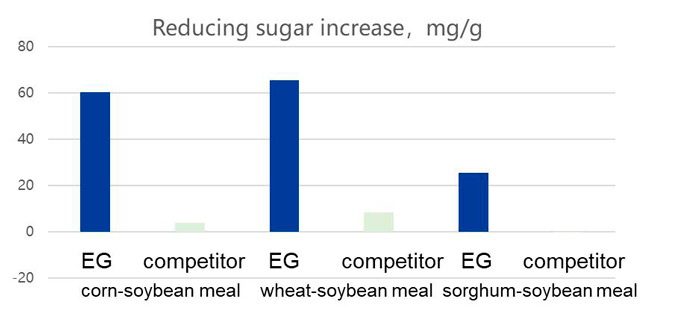
The energy value of enzymatic hydrolyzate is increased by 30 to 60kcal/kg!
Energy value of enzymatic hydrolysate, kcal/kg
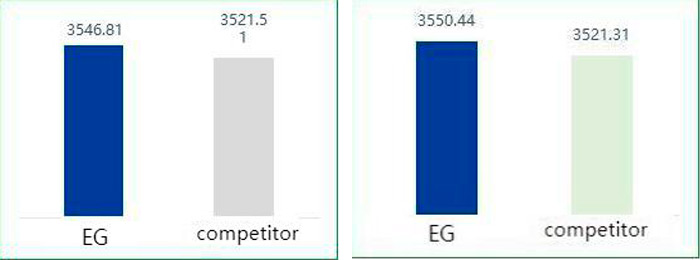
Commercial pig feed (corn wheat soybean meal)
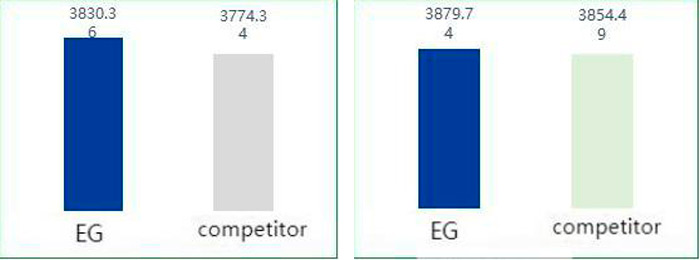
Commercial poultry feed (corn wheat soybean meal)
In vitro experiments showed that 4 mg of xylo-oligosaccharides were produced per gram of bran substrate!
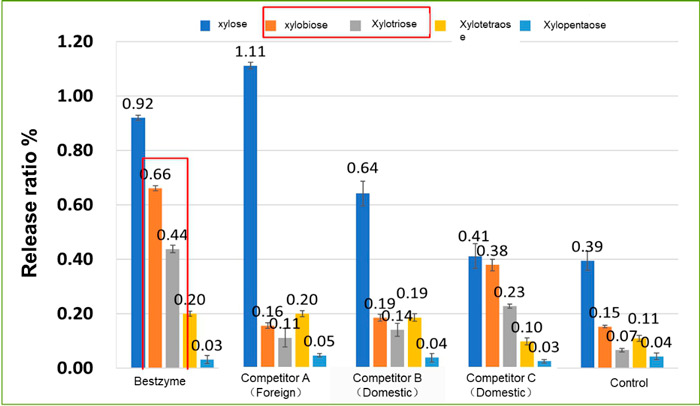
(AA broiler chicken, 42-day trial period, Shenyang Agricultural University)

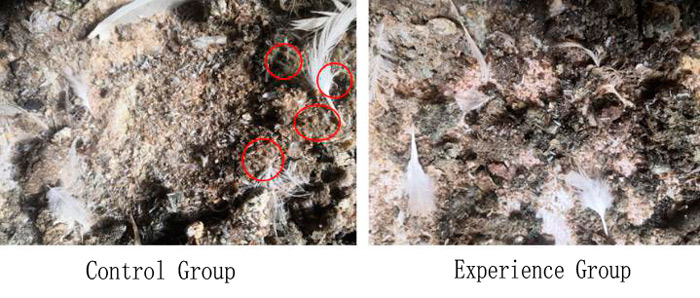
(48kg Duroc pigs, 29-day trial period, Sichuan Agricultural University)
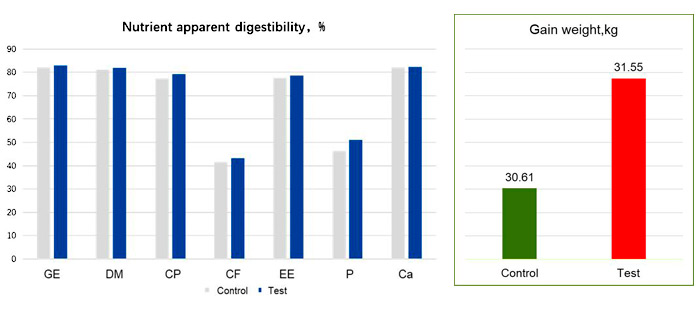
The breeding effect of EnerGen Supreme full-effect multi-enzyme is mainly reflected in the improvement of production performance of livestock and poultry, the increase of slaughter weight, the reduction of feed-to-meat ratio, and the improvement of manure, the reduction of overfeeding, and the reduction of manure volume. At present, the product has been put on trial in many places in the domestic and international markets, and the breeding effect has been recognized by customers. You are welcome to make an appointment for trial!
Related Articles
No.28 Huiyuan Street, Economic Development Area, Shanghe County, Jinan, Shandong Province, China
E-mail
[email protected]
Jinan Office: +86-531-5577-2899
Nanjing Office: +86-025-5270-3891